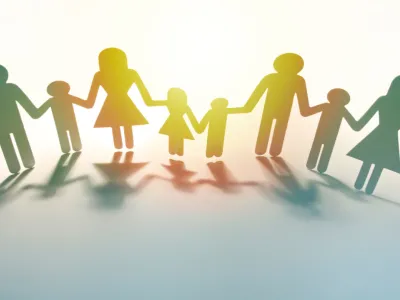Minnesota needs to expand the Energy Assistance program to provide cooling assistance

Energy Assistance is an essential program that allows thousands of Minnesotans to afford their utility bills and keep the heat on in the winter months – but available assistance falls far short of the need. As past-due bills continue to stack up, the number of shutoffs grows, and high temperatures become more common in our state, Minnesota should expand the Energy Assistance program and provide assistance year-round.
About the Energy Assistance Program
Energy Assistance (EAP, or LIHEAP) is a federally funded program administered by the Minnesota Department of Commerce, which works with local service providers throughout the state. The program provides grants to income-qualified households to help offset the cost of energy during the winter months. Currently, Minnesotans can apply for assistance beginning in October through the end of May. The program offers necessary relief to households who struggle with their bills year-round, but there are limited options available to customers to make their bills more affordable during the summer months.
If you or someone you know is struggling to afford energy bills, click here to learn more about Energy Assistance.
The need for expanded Energy Assistance
Minnesotans owe a substantial amount in past-due utility bills. At the end of 2023, the average past-due household owed 88 percent more than in 2019, with the average past-due amount nearing $400. At that time, Minnesota’s regulated utilities were carrying more than $120 million in arrearages. The total is higher if you include cooperatives and municipal utilities.
Unaffordable energy costs can have snowballing effects for households. According to a recent study, approximately 20 to 34 percent of U.S. households went without necessities such as food or medicine to pay utility bills. 69 percent of people who took out payday loans did so in order to pay a regular expense such as utilities – and compounding debts further increase households’ difficulty in paying utility bills.
Energy Assistance provides critical help during the winter months, but most utility shutoffs occur between June and September. And shutoffs are rising dramatically: more households were shut off in 2023 than in any year since 2015, and trends suggest even more will be disconnected by the end of 2024.
Energy Assistance has traditionally provided support for heating in Minnesota because we experience such extremely low temperatures. However, with our warming summers, air conditioning is increasingly becoming a necessity. The need for cooling has increased dramatically in recent decades – and low-income families in Minnesota are more likely to live in neighborhoods that are up to eight degrees hotter than average. That’s not even considering days when Minnesotans must close the windows and turn on the AC due to wildfire smoke or other causes of poor air quality.
More than half the country already provides Energy Assistance for cooling, including northern states like North Dakota. Minnesota, too, provided assistance through the summer months during the COVID-19 pandemic.
A request for state funding
CUB is gathering a coalition of support for an expansion of the Energy Assistance Program. In 2025, we will ask the state legislature to:
- Provide state funding to supplement the federal funds allocated to the Energy Assistance program; and
- Keep the Energy Assistance program open through the summer to prevent shutoffs and provide necessary cooling assistance.
If your organization is interested in supporting this proposal, please contact me at annielf@cubminnesota.org. And please watch this space for updates.